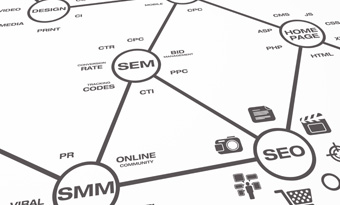Gearing up for Oracle’s Marketing Cloud Conference #Interact2014
The Battle of the Marketing Clouds
San Francisco is hosting the annual Oracle Marketing Cloud Interact 2014, one of the biggest events for digital marketers of the year. This year, it's expanded for more B2B and B2C marketers to take part and benefit from the collaboration of expertise. The focus will be on best practices in an era when data-driven marketing is king while also detailing the importance of customized engagement in a cross-channel world. The event is taking place next week at the Moscone West from July 16-18.
Interact '14 is around the corner. A must-attend event for every marketer: http://t.co/ET5Pupq4GL #interact14 pic.twitter.com/Lqi2mVlzLI
— oracleopenworld (@oracleopenworld) June 27, 2014
Marketers, no matter what their field, may be asking themselves if the conference will really be beneficial to them. After all, traditionalists have been shying away from embracing cloud marketing and such a summit can seem overwhelming. However, the event coordinators say that a series of sessions will be immersive and suitable for every level of marketer. While the theme is best practices, there are options for overview sessions or more in-depth choices. If you're a user of Responsys or any component of the Oracle Marketing Cloud, then you should definitely attend.
Experts on Hand
Some of the top marketing executives in the world will be leading sessions, including the top dogs at Comcast, LinkedIn, JCPenney, Lenovo, Shutterfly and DocuSign. This is one of a small smattering of conferences directed to both B2B and B2C companies, with Oracle dishing up a little something for every industry. The best and more innovative marketing campaigns will be dissected with a look at how the cloud and related technologies can further optimize such efforts.
As for the keynote speakers, Buzzfeed's VP and GM Jonathan Perelman is leading the pack. An associate professor from MIT Media Labs, Hugh Herr, is also on deck. You'll also be able to attend keynote lectures from Laura Ramos and Shar VanBoskirk of Forrester Research, a digital change partner from PwC, and LeapFrog's Senior VP and GM of Digital Community, Sean O'Driscoll.
Oracle executives will also be on hand including President Mark Hurd, GM and Senior VW Kevin Akeroyd, and Group VP of products Steve Krause.
What to Expect at Interact 2014
Attendees will face two big challenges if they plan to make the trip to SFO: Dealing with “the harsh mid-70° degree San Francisco summer temperatures,” and choosing which of the 30+ breakout sessions to attend first. No matter which session is chosen, Oracle promises “actionable insights” so that marketers can help improve their capabilities via building a “digital dialogue” that translates best to customers.
As a grand finale, a special private show from the B-52's is also schedule. The “World's Greatest Party Band” will be on hand to really bring the party to life. Marketing is an industry that really makes the most of social aspects of conferences, and the biggest cloud marketing event in the country is no exception. I, for one, have always wanted to head out to the Love Shack.
Coming Armed with Questions
For those who aren't 100 percent comfortable and familiar with the marketing cloud, it's wise to come to the conference armed with questions in order to get expert advice. Finding out more about how traditional marketing tactics translate into cloud marketing, the difference between cloud business intelligence and cloud marketing, and the easiest path to transition to the cloud specifically for marketing departments can all be addressed.
I'll be looking at this conference through a different lens. As someone who went to Salesforce's Dreamforce conference, the Adobe Summit and Ensighten's Agility 2014, I'll be curious to see how open Oracle is with their version of their marketing cloud. I'll be sharing all of my findings during my Marketing Technology Conference keynote in Boston in August. Viva la marketing technologies!
Salesforce and Adobe are a closed marketing cloud, with API's and apps to utilize other marketing technologies, and they don't typically allow competing technologies into their cloud. Whereas Ensighten allows you to build your own marketing technology stack using components of Adobe, Oracle, Salesforce, IBM or any of the other 1000+ marketing technologies. Let's hope that Oracle promotes openness, as that is clearly the best way to go.
The post Gearing up for Oracle's Marketing Cloud Conference #Interact2014 appeared first on Technorati.






Get Social